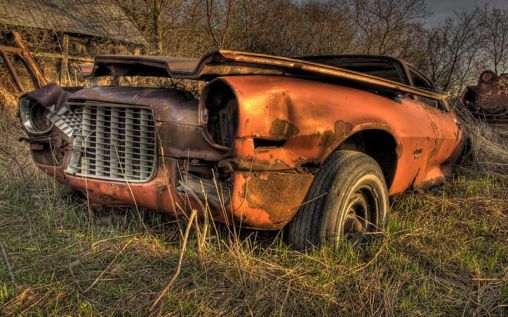The Lifecycle of Your Car: From New to Junk and Back Again
Posted by admin at 4 January 2018, at 21 : 51 PM

As you’re driving down the road on any given day, you’ll pass hundreds (if not thousands) of other cars. Some of them are clearly brand new: they’re gleaming, shiny, and flawless. You can practice catch a whiff of the new car smell as you drive past. Others are solid, reliable-looking vehicles that look as though they’ll keep running for years to come–but it’s clear that they’ve seen better days. Maybe there’s a dent here or there; or, you might be able to detect an odd whine coming from underneath the hood.
Then, you drive past a house with something parked in the yard that barely resembles a car. It’s up on blocks with its tires removed, covered in rust, and practically falling apart. It’s clear that it will never run again, and is only valuable to its owner if they sell it to a junk car buyer.
With so many different vehicles in varying states of repair (or disrepair) out there, have you ever wondered about the lifecycle of a car? What happens in the factory? Where do all of the materials come from? And, at the end of a car’s life, where does it end up (other than in the occasional front yard)? Keep reading to find out.
New Cars from Recycled Scrap?
When you buy a new car, you tend to think of it as entirely and completely new. After all, it looks flawless, drives perfectly, and has that infamous new car smell to it. You might be surprised to learn, though, that about 25% of a new car’s body comes from recycled materials. As cars come into being on the assembly line, a significant chunk of what’s being used to create them has been used before, sometimes in another car.
Once a car leaves the factory, it heads to an auto dealership to be purchased new. The average vehicle now lasts about 11.8 years on the road, and will change hands multiple times throughout its life. It’s quite rare for a car to stay with the same owner for its entire lifecycle.
Junk Car Status and Recycling
When it comes to lifespan, every car is different. Some can run for 300,000 miles or more. A meticulously maintained Volvo can (apparently) run for 3 million miles. And some cars are downright lemons: they’ll suffer from major mechanical problems early on, and the cost of repairing them will quickly exceed their value.
Regardless of how many miles are on it, we all know a junk car when we see one. Whether it’s been damaged by flood water, totaled in an accident, or covered in rust after sitting in the same spot for 40+ years, every car eventually reaches a point where it’s no longer driveable. When this happens, that car is destined for the junkyard.
But what exactly happens there? Many of us have a mental image of a huge, dusty lot, piled high with cars that are slowly falling apart. While some vehicles may sit for years as individuals come and selectively remove parts from them one by one, many cars are fully recycled into scrap metal and their other component materials.
In fact, about 95% of all cars end up recycled. This is far more than other materials such as glass, aluminum, or newspaper. After a junk car has had all its fluids drained and any valuable parts removed, it’s crushed flat, shredded into small chunks, and separated into scrap metal by type (steel, aluminum, and so on). These chunks of metal are shipped off to be smelted into raw materials, which are then used to build new cars. And so the cycle continues.
So, remember: if you decide to get rid of your old junk car, don’t feel guilty. It’s not headed for the landfill. In fact, a piece of it might find its way into your new vehicle.
As a national junk car buyer, Rusty’s Auto Salvage pays cash for junk cars throughout the United States. Follow Rusty’s on Facebook and Twitter.
